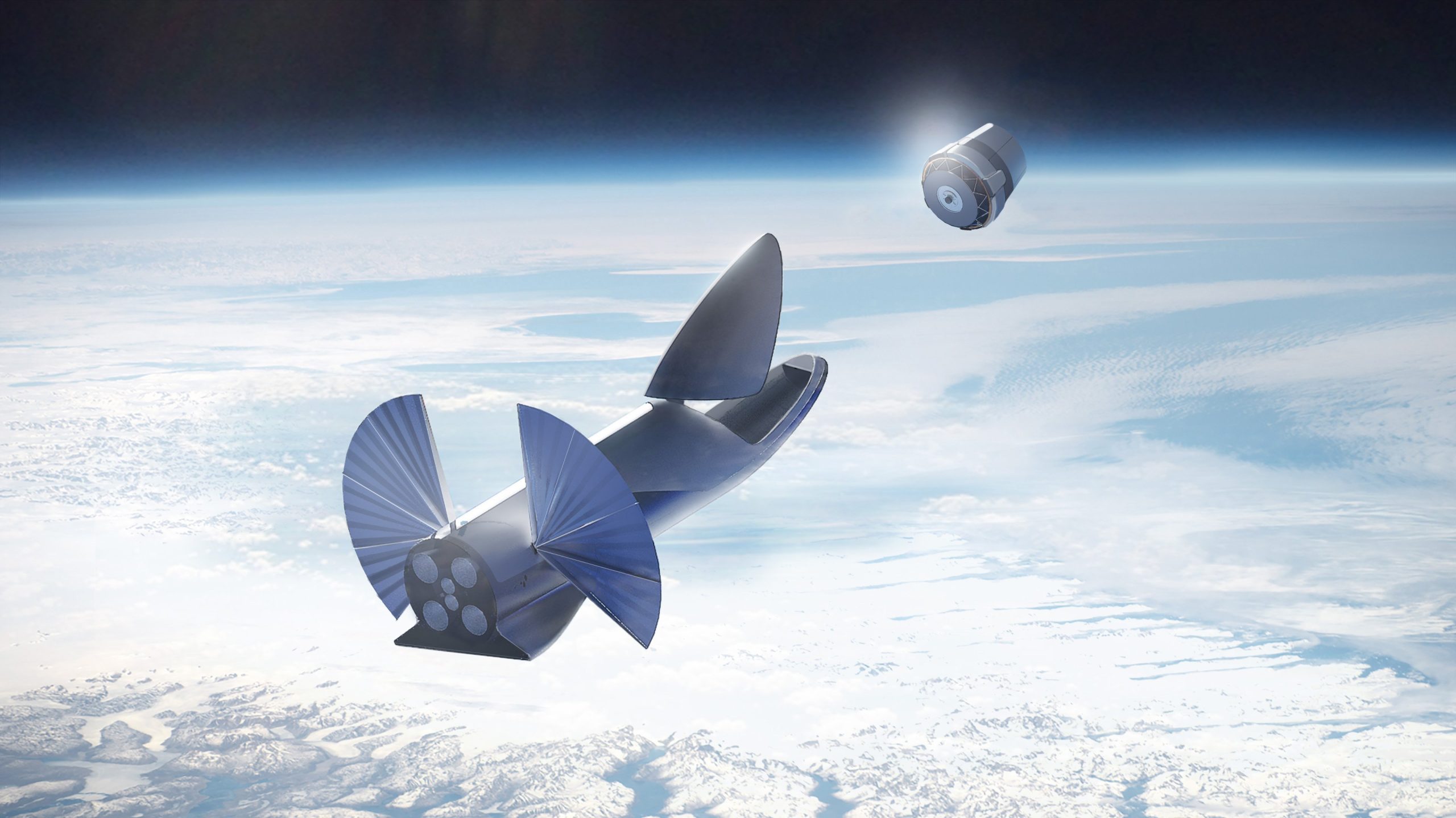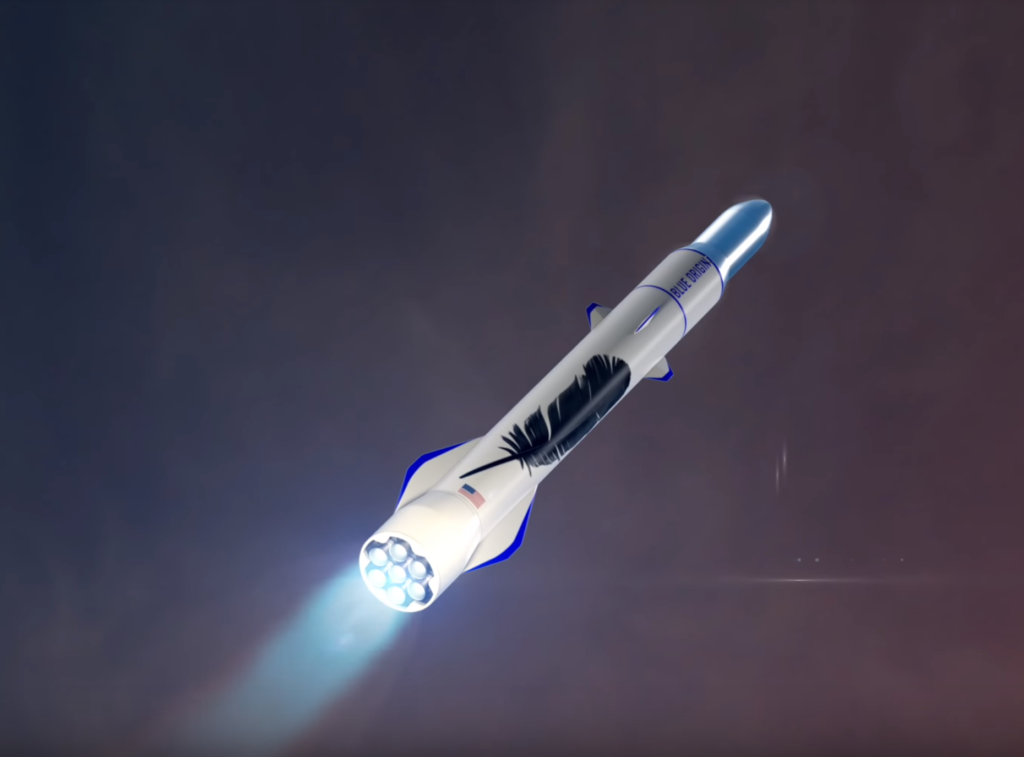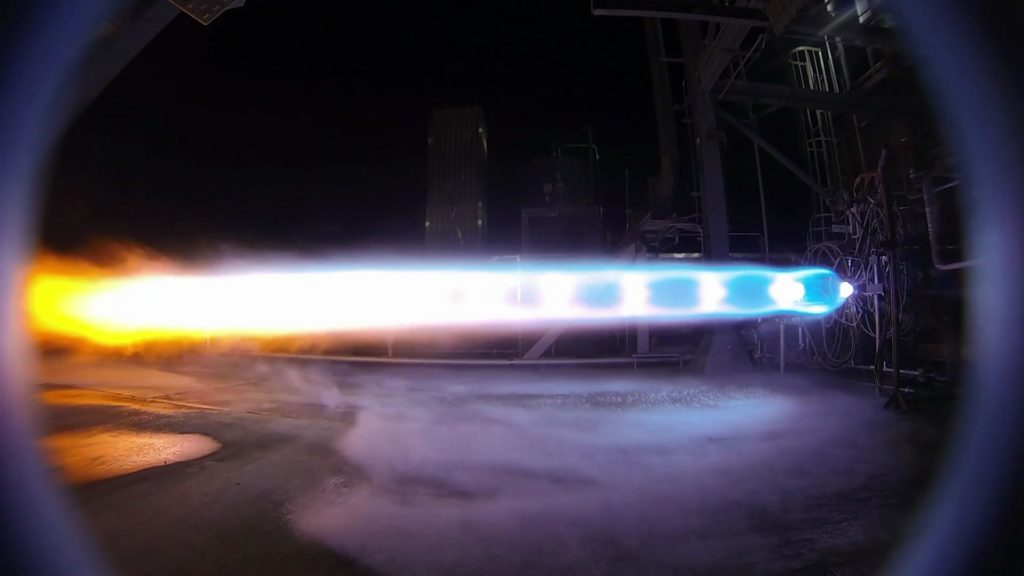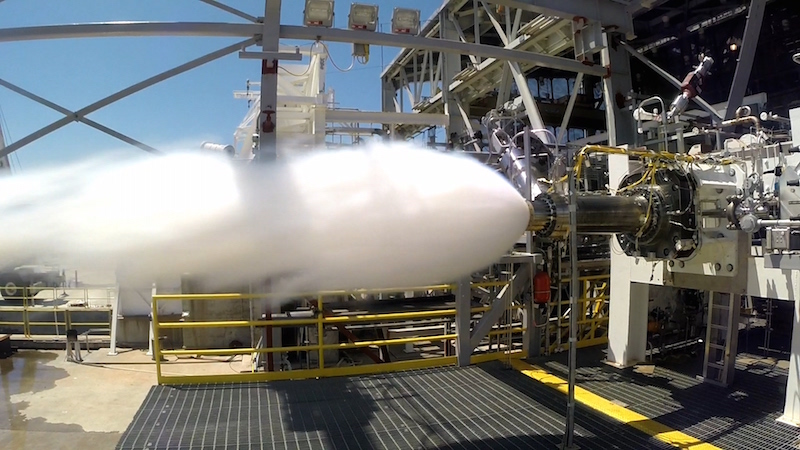

News
US Air Force issues RFP for massive rockets, SpaceX’s BFR could be one of them
The US Air Force has released a Request For Proposal (RFP) that hopes to fund the development of multiple heavy-lift rocket prototypes to launch no later than 2021. The USAF specified on October 5 that it wants to partially fund prototype development for at least three promising US-sourced launch vehicles, while maintaining the options to select none of the proposals or even more than three. The purpose of these broad strokes is to provide the Air Force and US military in general redundant access to space by way of “at least two domestic…launch service providers” capable of meeting National Security Space (NSS) requirements.
However unlikely it may seem, NASA experienced this firsthand when two of the vehicles it funded, SpaceX’s Falcon 9 and Orbital-ATK’s Antares, experienced complete failures within less than a year of each other. Both vehicle failures destroyed supplies intended for the International Space Station and forced NASA to rely on Soyuz missions to fill the gaps created while producing considerable uncertainty for the agency. By funding two or more independent launch vehicles, the Air Force would lessen the impact of such failures, and this assured access is rightly perceived as an invaluable commodity in the military.
- .While SpaceX’s own visualizations are gorgeous and thrilling in their own rights, Romax’s interpretation adds an unparalleled level of shock and awe. (SpaceX)
- A render of Blue Origin’s larger New Glenn vehicle. (Blue Origin)
- The only current render of OATK’s Next Generation Launcher. (OATK)
Several details in the latest proposal make it relatively easy to name the obvious prospective applicants. The payload requirements necessitate heavy lift or even super-heavy lift launch vehicles capable of placing anywhere from 5,000 to 37,500 pounds into a variety of Earth orbits, ranging from low Earth orbit (~500 mi) to direct transfer geostationary orbits (~19,200 mi). This narrows the field considerably, pushing out all smaller-scale vehicles. Also telling is a requirement that proposed launch vehicles make use of rocket propulsion systems (RPS) already funded for development by the USAF if at all possible.
Considering the inherently complex and difficult process of developing massive rockets, initial launch dates no later than 2021 (or 2024) likely mean that the vehicles being considered must already be under some level of serious development. This leaves us with four possible options in the US, undoubtedly not a coincidence given the RFP’s explicit goal of facilitating the creation of “at least three…prototypes as early as possible” and “at least two domestic…launch service providers”. These four vehicles are SpaceX’s BFR, Blue Origin’s New Glenn, ULA’s Vulcan, and Orbital-ATK’s NGL, all of which already have tentative inaugural launch dates clustered from 2019 to 2022. Perhaps even more revealing, all four vehicles can be expected to utilize several rocket propulsion systems (rocket engines) already funded by the Air Force, namely SpaceX’s Raptor, Blue Origin’s BE-4 and BE-3U, and Aerojet-Rocketdyne’s AR-1.
While the development of BE-4 and AR-1 have been somewhat veiled, SpaceX’s Raptor engine has publicly made a great deal of progress. As discussed during Elon Musk’s IAC 2017 presentation, the company has conducted an array of successful tests with its subscale Raptor program, to the tune of 42 individual hot-fire tests totaling more than 1,200 seconds. Musk also reported that the only thing preventing tests longer than 100 seconds was the size of the propellant tanks at the test stand, a genuinely impressive accomplishment if true. The sticking point, however, is how much difficulty SpaceX will have as they transfer to full-scale Raptor testing. The subscale Raptors being tested have a reported thrust of 1,000 kN, whereas the new full-scale thrust targets for BFR have settled on 1,700-1,900 kN, considerably smaller than the 3,000 kN figure from 2016 but still nearly a factor of two larger than the test articles SpaceX has had success with. In fact, educated speculation from SpaceX fans suggest that the operational Raptor as shown in 2017 may only need to be about 15% larger than the current test article(s). The pressure the full-size engine operates at will be considerably higher, so SpaceX’s work is not done by any means, but the company’s next-gen rocket propulsion system is arguably far closer to completion than any of its competitors’ offerings.
- SpaceX’s subscale Raptor engine has completed more than 1200 seconds of testing in less than two years. (SpaceX)
- A subscale version of BE-4 testing staged combustion and nozzle technology. (Blue Origin)
- Aerojet-Rocketdyne’s AR-1 preburner conducted its first successful test earlier this year. (AR)
As far as we are publicly aware, SpaceX’s subscale Raptor testing has yet to result in a major failure and has largely been a great success. Blue Origin’s BE-4 is known to have experienced at least one critical failure during hot-fire testing, while AR-1 has not yet begun full engine tests but is well into concrete hardware testing. Blue Origin’ s BE-4 engine and its New Glenn rocket are currently expected to fly for the first time before 2020, with AR’s NGL tentatively planning for a 2021 inaugural flight, assuming the company chooses to continue pursuing its development.
SpaceX has not yet specified when BFR or BFS will first take flight. Raptor is likely to begin full-scale testing relatively soon, and Musk revealed that SpaceX was aiming to begin construction of the first BFR as early as Q2 of 2018. It’s quickly starting to look like the U.S. is about to enter a sort of modern commercial space race and regardless of the outcome, the next several months and years are bound to be tense and exciting for SpaceX, Blue Origin, and the established incumbents as they battle for both public and private contracts.

Elon Musk
Elon Musk’s X will start using a Tesla-like software update strategy
The initiative seems designed to accelerate updates to the social media platform, while maintaining maximum transparency.

Elon Musk’s social media platform X will adopt a Tesla-esque approach to software updates for its algorithm.
The initiative seems designed to accelerate updates to the social media platform, while maintaining maximum transparency.
X’s updates to its updates
As per Musk in a post on X, the social media company will be making a new algorithm to determine what organic and advertising posts are recommended to users. These updates would then be repeated every four weeks.
“We will make the new 𝕏 algorithm, including all code used to determine what organic and advertising posts are recommended to users, open source in 7 days. This will be repeated every 4 weeks, with comprehensive developer notes, to help you understand what changed,” Musk wrote in his post.
The initiative somewhat mirrors Tesla’s over-the-air update model, where vehicle software is regularly refined and pushed to users with detailed release notes. This should allow users to better understand the details of X’s every update and foster a healthy feedback loop for the social media platform.
xAI and X
X, formerly Twitter, has been acquired by Elon Musk’s artificial intelligence startup, xAI last year. Since then, xAI has seen a rapid rise in valuation. Following the company’s the company’s upsized $20 billion Series E funding round, estimates now suggest that xAI is worth tens about $230 to $235 billion. That’s several times larger than Tesla when Elon Musk received his controversial 2018 CEO Performance Award.
As per xAI, the Series E funding round attracted a diverse group of investors, including Valor Equity Partners, Stepstone Group, Fidelity Management & Research Company, Qatar Investment Authority, MGX, and Baron Capital Group, among others. Strategic partners NVIDIA and Cisco Investments also continued support for building the world’s largest GPU clusters.
News
Tesla FSD Supervised wins MotorTrend’s Best Driver Assistance Award
The decision marks a notable reversal for the publication from prior years, with judges citing major real-world improvements that pushed Tesla’s latest FSD software ahead of every competing ADAS system.

Tesla’s Full Self-Driving (Supervised) system has been named the best driver-assistance technology on the market, earning top honors at the 2026 MotorTrend Best Tech Awards.
The decision marks a notable reversal for the publication from prior years, with judges citing major real-world improvements that pushed Tesla’s latest FSD software ahead of every competing ADAS system. And it wasn’t even close.
MotorTrend reverses course
MotorTrend awarded Tesla FSD (Supervised) its 2026 Best Tech Driver Assistance title after extensive testing of the latest v14 software. The publication acknowledged that it had previously criticized earlier versions of FSD for erratic behavior and near-miss incidents, ultimately favoring rivals such as GM’s Super Cruise in earlier evaluations.
According to MotorTrend, the newest iteration of FSD resolved many of those shortcomings. Testers said v14 showed far smoother behavior in complex urban scenarios, including unprotected left turns, traffic circles, emergency vehicles, and dense city streets. While the system still requires constant driver supervision, judges concluded that no other advanced driver-assistance system currently matches its breadth of capability.
Unlike rival systems that rely on combinations of cameras, radar, lidar, and mapped highways, Tesla’s FSD operates using a camera-only approach and is capable of driving on city streets, rural roads, and freeways. MotorTrend stated that pure utility, the ability to handle nearly all road types, ultimately separated FSD from competitors like Ford BlueCruise, GM Super Cruise, and BMW’s Highway Assistant.
High cost and high capability
MotorTrend also addressed FSD’s pricing, which remains significantly higher than rival systems. Tesla currently charges $8,000 for a one-time purchase or $99 per month for a subscription, compared with far lower upfront and subscription costs from other automakers. The publication noted that the premium is justified given FSD’s unmatched scope and continuous software evolution.
Safety remained a central focus of the evaluation. While testers reported collision-free operation over thousands of miles, they noted ongoing concerns around FSD’s configurable driving modes, including options that allow aggressive driving and speeds beyond posted limits. MotorTrend emphasized that, like all Level 2 systems, FSD still depends on a fully attentive human driver at all times.
Despite those caveats, the publication concluded that Tesla’s rapid software progress fundamentally reshaped the competitive landscape. For drivers seeking the most capable hands-on driver-assistance system available today, MotorTrend concluded Tesla FSD (Supervised) now stands alone at the top.
News
Elon Musk’s Grokipedia surges to 5.6M articles, almost 79% of English Wikipedia
The explosive growth marks a major milestone for the AI-powered online encyclopedia, which was launched by Elon Musk’s xAI just months ago.

Elon Musk’s Grokipedia has grown to an impressive 5,615,201 articles as of today, closing in on 79% of the English Wikipedia’s current total of 7,119,376 articles.
The explosive growth marks a major milestone for the AI-powered online encyclopedia, which was launched by Elon Musk’s xAI just months ago. Needless to say, it would only be a matter of time before Grokipedia exceeds English Wikipedia in sheer volume.
Grokipedia’s rapid growth
xAI’s vision for Grokipedia emphasizes neutrality, while Grok’s reasoning capabilities allow for fast drafting and fact-checking. When Elon Musk announced the initiative in late September 2025, he noted that Grokipedia would be an improvement to Wikipedia because it would be designed to avoid bias.
At the time, Musk noted that Grokipedia “is a necessary step towards the xAI goal of understanding the Universe.”
Grokipedia was launched in late October, and while xAI was careful to list it only as Version 0.1 at the time, the online encyclopedia immediately earned praise. Wikipedia co-founder Larry Sanger highlighted the project’s innovative approach, noting how it leverages AI to fill knowledge gaps and enable rapid updates. Netizens also observed how Grokipedia tends to present articles in a more objective manner compared to Wikipedia, which is edited by humans.
Elon Musk’s ambitious plans
With 5,615,201 total articles, Grokipedia has now grown to almost 79% of English Wikipedia’s article base. This is incredibly quick, though Grokipedia remains text-only for now. xAI, for its part, has now updated the online encyclopedia’s iteration to v0.2.
Elon Musk has shared bold ideas for Grokipedia, including sending a record of the entire knowledge base to space as part of xAI’s mission to preserve and expand human understanding. At some point, Musk stated that Grokipedia will be renamed to Encyclopedia Galactica, and it will be sent to the cosmos.
“When Grokipedia is good enough (long way to go), we will change the name to Encyclopedia Galactica. It will be an open source distillation of all knowledge, including audio, images and video. Join xAI to help build the sci-fi version of the Library of Alexandria!” Musk wrote, adding in a later post that “Copies will be etched in stone and sent to the Moon, Mars and beyond. This time, it will not be lost.”














